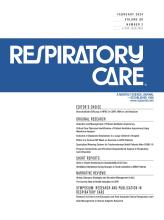This article requires a subscription to view the full text. If you have a subscription you may use the login form below to view the article. Access to this article can also be purchased.
Abstract
BACKGROUND: Unplanned extubation (UE) is defined as unintentional dislodgement of an endotracheal tube (ETT) from the trachea. UEs can lead to instability, cardiac arrest, and may require emergent tracheal re-intubation. As part of our hospital-wide quality improvement (QI) work, a multidisciplinary committee reviewed all UEs to determine contributing factors and evaluation of clinical outcomes to develop QI interventions aimed to minimize UEs. The objective was to investigate occurrence, contributing factors, and clinical outcomes of UEs in the pediatric ICU (PICU), cardiac ICU (CICU), and neonatal ICU (NICU) in a large academic children's hospital. We hypothesized that these would be substantially different across 3 ICUs.
METHODS: A single-center retrospective review of UEs in the PICU, CICU, and NICU was recorded in a prospective database for the last 5 y. Consensus-based standardized operational definitions were developed to capture contributing factors and adverse events associated with UEs. Data were extracted through electronic medical records by 3 respiratory therapists and local Virtual Pediatric Systems (VPS) database. Consistency of data extraction and classification were evaluated.
RESULTS: From January 2016–December 2021, 408 UEs in 339 subjects were reported: PICU 52 (13%), CICU 31 (7%), and NICU 325 (80%). The median (interquartile range) of age and weight was 2.0 (0–4.0) months and 5.3 (3.0–8.0) kg. Many UE events were not witnessed (54%). Common contributing factors were routine nursing care (no. = 70, 18%), ETT retaping (no. = 62, 16%), and being held (no. = 15, 3.9%). The most common adverse events with UE were desaturation < 80% (33%) and bradycardia (22.8%). Cardiac arrest occurred in 12%. Sixty-seven percent of UEs resulted in re-intubation within 72 h. The proportion of re-intubation across 3 units was significantly different: PICU 62%, CICU 35%, NICU 71%, P < .001.
CONCLUSIONS: UEs occurred commonly in a large academic children's hospital. Whereas UE was associated with adverse events, re-intubation rates within 72 h were < 70% and variable across the units.
- intubation
- intratracheal
- pediatrics
- critical care
- airway extubation
- neonatal ICU
- pediatric ICU
- risk factors
- ICUs
Footnotes
- Correspondence: Cheryl Dominick MHA/E RRT RRT-NPS, Children's Hospital of Philadelphia, Respiratory Care Department, 3401 Civic Center Boulevard, Philadelphia, PA 19104. E-mail: defalco{at}chop.edu
Ms Napolitano discloses relationships with Dräger Medical, Vero-Biotech, Smiths Medical, Philips Respironics, and Actuated Medical. The remaining authors have disclosed no conflicts of interest.
Ms Dominick presented a version of this paper as an Editor's Choice abstract at AARC Congress 2022, held November 9–12, 2022, in New Orleans, Louisiana.
- Copyright © 2024 by Daedalus Enterprises
Pay Per Article - You may access this article (from the computer you are currently using) for 1 day for US$30.00
Regain Access - You can regain access to a recent Pay per Article purchase if your access period has not yet expired.







